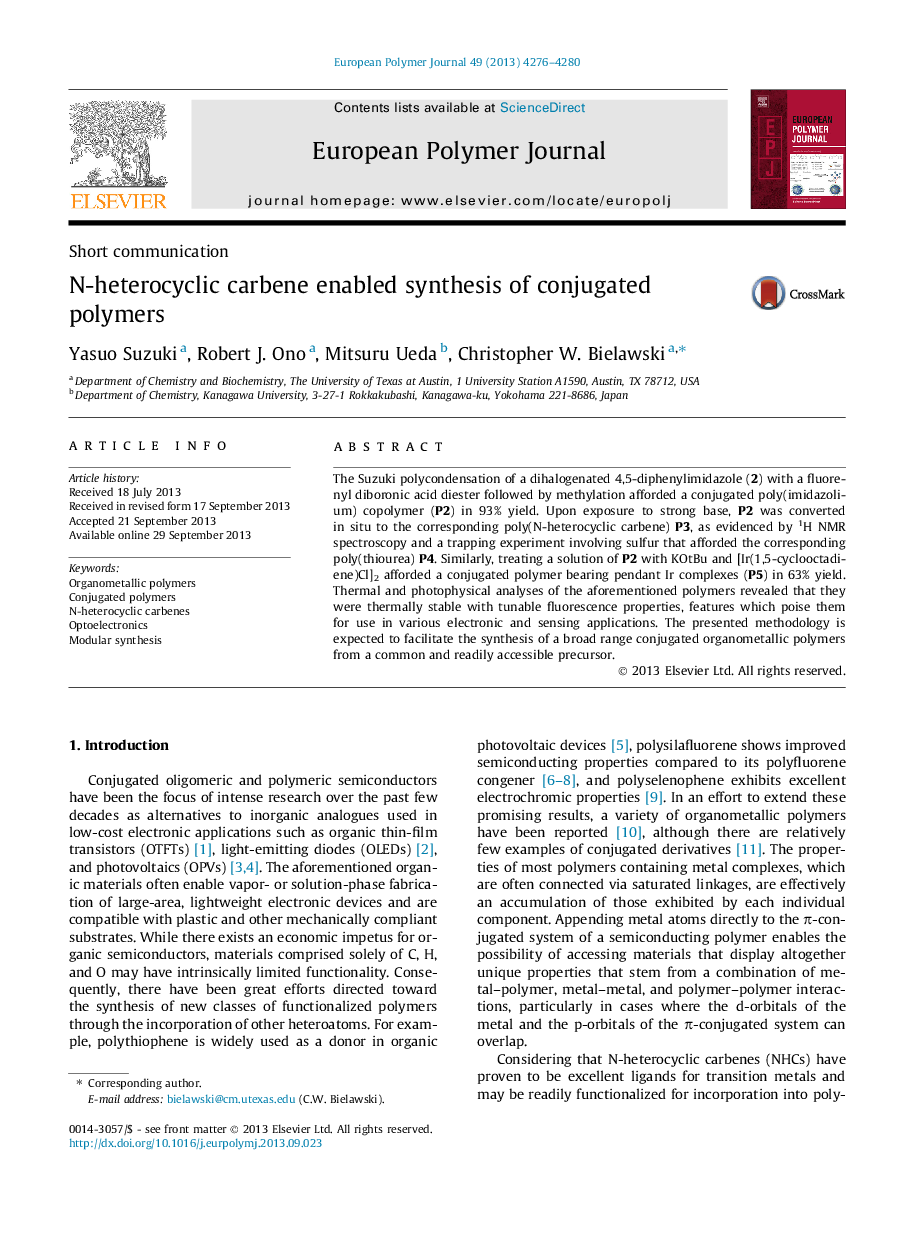| کد مقاله | کد نشریه | سال انتشار | مقاله انگلیسی | نسخه تمام متن |
|---|---|---|---|---|
| 1401972 | 984727 | 2013 | 5 صفحه PDF | دانلود رایگان |

• A modular method for synthesizing conjugated organometallic polymers was developed.
• The method employs a versatile polymeric N-heterocyclic carbene based intermediate.
• The polymers were found to be thermally stable with tunable fluorescence properties.
The Suzuki polycondensation of a dihalogenated 4,5-diphenylimidazole (2) with a fluorenyl diboronic acid diester followed by methylation afforded a conjugated poly(imidazolium) copolymer (P2) in 93% yield. Upon exposure to strong base, P2 was converted in situ to the corresponding poly(N-heterocyclic carbene) P3, as evidenced by 1H NMR spectroscopy and a trapping experiment involving sulfur that afforded the corresponding poly(thiourea) P4. Similarly, treating a solution of P2 with KOtBu and [Ir(1,5-cyclooctadiene)Cl]2 afforded a conjugated polymer bearing pendant Ir complexes (P5) in 63% yield. Thermal and photophysical analyses of the aforementioned polymers revealed that they were thermally stable with tunable fluorescence properties, features which poise them for use in various electronic and sensing applications. The presented methodology is expected to facilitate the synthesis of a broad range conjugated organometallic polymers from a common and readily accessible precursor.
Figure optionsDownload as PowerPoint slide
Journal: European Polymer Journal - Volume 49, Issue 12, December 2013, Pages 4276–4280